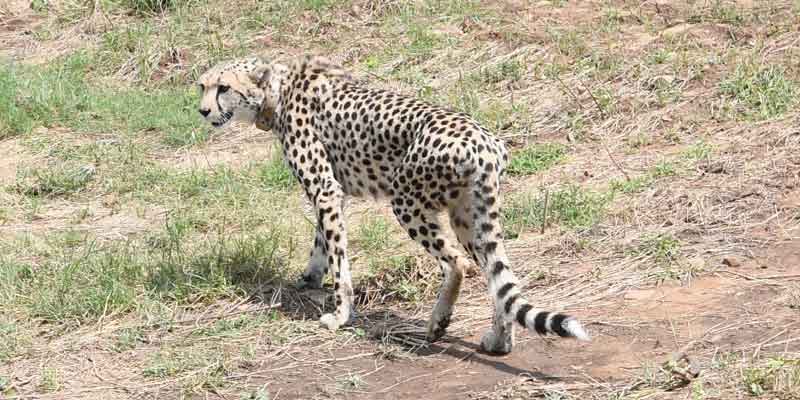- India
- Jul 25
- Kevin Savio Antony
Gujarat gears up for cheetah-breeding centre at Banni
As part of the next phase of Project Cheetah, some of the new cheetahs being brought in from Africa may be sent to a cheetah-breeding and conservation center currently under construction in the expansive grasslands of Banni in the Rann of Kutch (Kachchh), Gujarat.
These grasslands are spread over an area of 2,618 km, and account for approximately 45 per cent of the pastures in the state.
Banni Grasslands
• Banni grasslands, located along the northern border of Kachchh district in the state of Gujarat, are among the largest two stretches of contiguous grassland in India.
• Consisting of two ecosystems in juxtaposition — wetlands and grasslands — Bannis fall under Dichanthium-Cenchrus-Lasiurus type of grass cover.
• Traditionally, Banni grasslands were managed following a system of rotational grazing. With the disintegration of traditional management practices, these grasslands are degrading rapidly due to excessive pressure from livestock grazing and increased soil salinity leading to invasion of Prosopis juliflora, water scarcity, climate change and desertification.
• The reserve is located on the southernmost tip of the Rann of Kutch desert, known for its marshy salt flats. The topography features primarily flat terrain with low-lying areas, dunes, and shallow wetlands. The climate is arid to semi-arid, characterised by hot summers and mild winters.
• The reserve is home to diverse wildlife, including the endangered Asiatic wild ass, Indian wolf, and desert fox. It also boasts over 250 bird species, making it a popular destination for bird watching.
• Renowned for its rich cultural heritage, the Banni Grasslands Reserve hosts several traditional pastoralist communities, such as the Kutchi, Jat, and Rabari. The handicraft industry, featuring traditional crafts like Kutch leatherwork, weaving, and embroidery, is a significant source of income and an important part of the region’s cultural heritage.
• Ecologically, the grasslands of the Banni Grasslands Reserve are vital, providing essential habitats for various wildlife species.
Project Cheetah
• World’s first: The world’s first inter-continental large wild carnivore translocation project.
• Association: Part of India’s centrally sponsored ‘Project Tiger’ scheme.
• Funding: Funded by Project Tiger and the Compensatory Afforestation Fund Management & Planning Authority (CAMPA).
• Extinction: The cheetah was declared extinct in India in 1952, making it the only large wild mammalian species to go extinct since India’s independence in 1947.
Reasons for extinction:
i) Large-scale capture for coursing, bounty, and sport hunting.
ii) Extensive habitat conversion.
iii) Decline in prey base.
• Nodal agency: The National Tiger Conservation Authority (NTCA) is responsible for funding, supervising, and supporting the project.
• Technical support: Wildlife Institute of India (WII) and national/international carnivore/cheetah experts/agencies provide technical and knowledge support.
• Future plan: Introduce at least 50 cheetahs into various national parks over the next five years.
Significance of Cheetah re-location:
• Establish a viable cheetah metapopulation in India.
• Mobilise resources.
• Contribute to global conservation efforts.
• Enhance local community livelihoods.
• Support climate change mitigation goals.
African Cheetah
• Both a flagship species (selected to act as an ambassador, icon or symbol for a defined habitat, issue, campaign or environmental cause) and an umbrella species (its conservation ensures conservation of other species of wild animals and forests).
Characteristics:
• World’s fastest land mammal, capable of running at 80 to 128 km/h.
• Diurnal — they hunt during the day.
• Unlike other big cats (lions, tigers, etc) they don’t roar.
• Gestation period- 93 days.
• Live in three main social groups: females and their cubs, male coalitions, and solitary males.
• Females lead a nomadic life searching for prey in large home ranges, males are more sedentary and instead establish much smaller territories.
• Average female home ranges have been estimated to be about 750 sq km.
• Among large carnivores, conflicts with human interests are lowest for cheetahs, as they are not a threat to humans and usually do not attack large livestock.
(The author is a trainer for Civil Services aspirants.)


